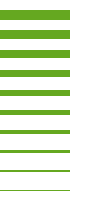https://doi.io-warnemuende.de/10.12754/msr-2012-0087
doi:10.12754/msr-2012-0087
© Author(s) 2012. This work is distributed
under

Dieses Werk ist lizenziert unter einer Creative Commons Namensnennung - Nicht kommerziell - Keine Bearbeitungen 4.0 International Lizenz.
A regional 3D coupled ecosystem model of the Benguela upwelling system
Abstract. A regional 3-dimensional ecosystem model is presented designed to simulate the nutrient and oxygen dynamics in the Benguela upwelling system. Strong upwelling driven by the southern trade winds supply cold, nutrient rich water. This supports a high primary production and results in a large flux of sinking detritus. Hence, a thick organic-rich mud belt is characteristic for the Namibian continental shelf. Both biological and hydrodynamic processes contribute to the very specific geochemistry on the Namibian shelf. Notably high rates of sulfate reduction in the sediment generate high concentrations of dissolved hydrogen sulfide in the surface sediment layers and may be released intermittently to the water column. Large chemoautotrophic sulfur bacteria thrive on hydrogen sulfide and form conspicuous mats on the sediment. Denitrification and nitrification are important components of the nitrogen cycle and anaerobic ammonium oxidation is known to play a significant role as a nitrogen sink in the Benguela upwelling system. Organisms at higher trophic levels like zooplankton play an important role for mineralisation but also for the vertical and lateral transport of organic matter. The physical model component is MOM-4 (Geophysical Fluid Dynamics Laboratory, GFDL). The ecosystem model is a NPZDmodel (Nutrients-Phytoplankton-Zooplankton-Detritus) and is an extension of the ecosystem model ERGOM (Fennel & Neumann, 2004). Three phytoplankton and three zooplankton functional types are distinguished. All ecologically relevant processes mediated by prokaryotes in this ecosystem are implemented and the environmental conditions (e.g. oxygen concentration, temperature etc.) define the metabolic rates. The regional ecosystem model is tailored to the specific oxygen and sulfur dynamics on the shelf and simulates both processes in the water column and in the sediment. This model has been developed within the GENUS-project (Geochemistry and Ecology of the Namibian Upwelling System) funded by the German Federal Ministry of Education and Research (BMBF, reference number 03F0497A). It is an endorsed project of the Integrated Marine Biogeochemistry and Ecosystem Research (IMBER).
